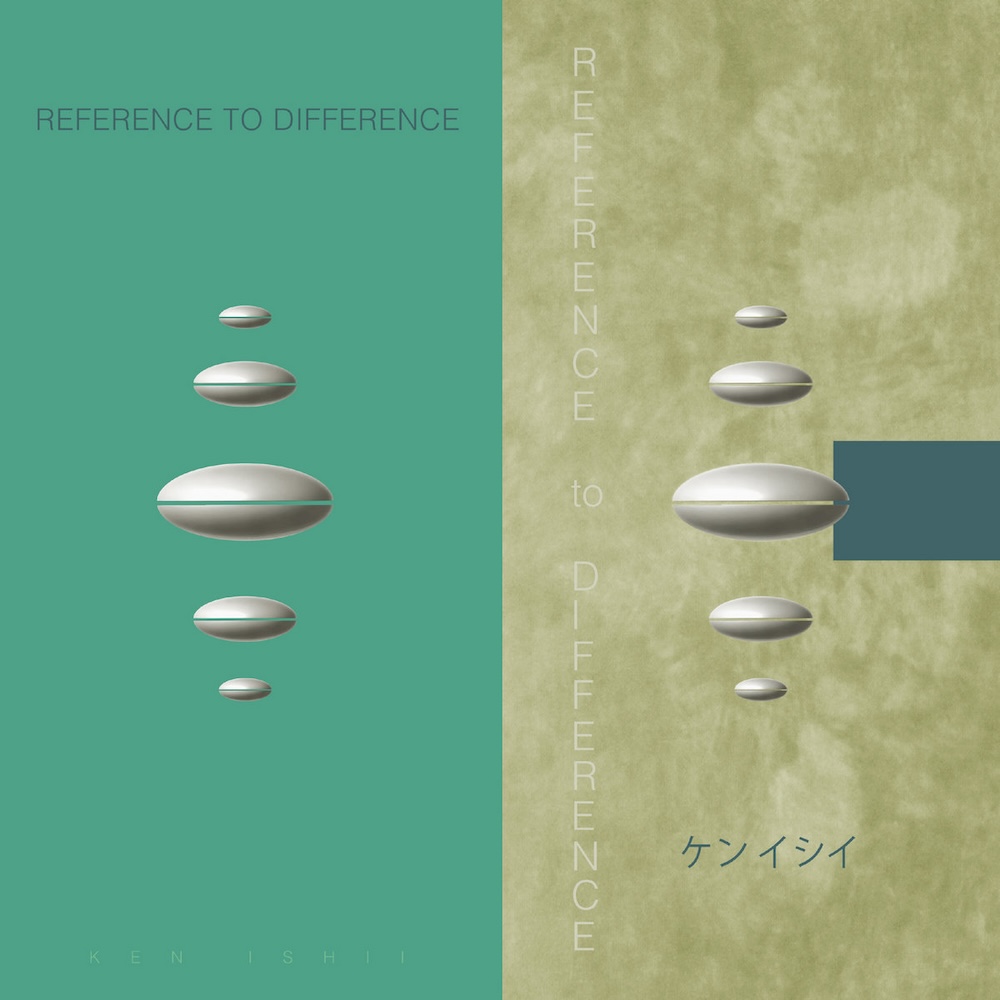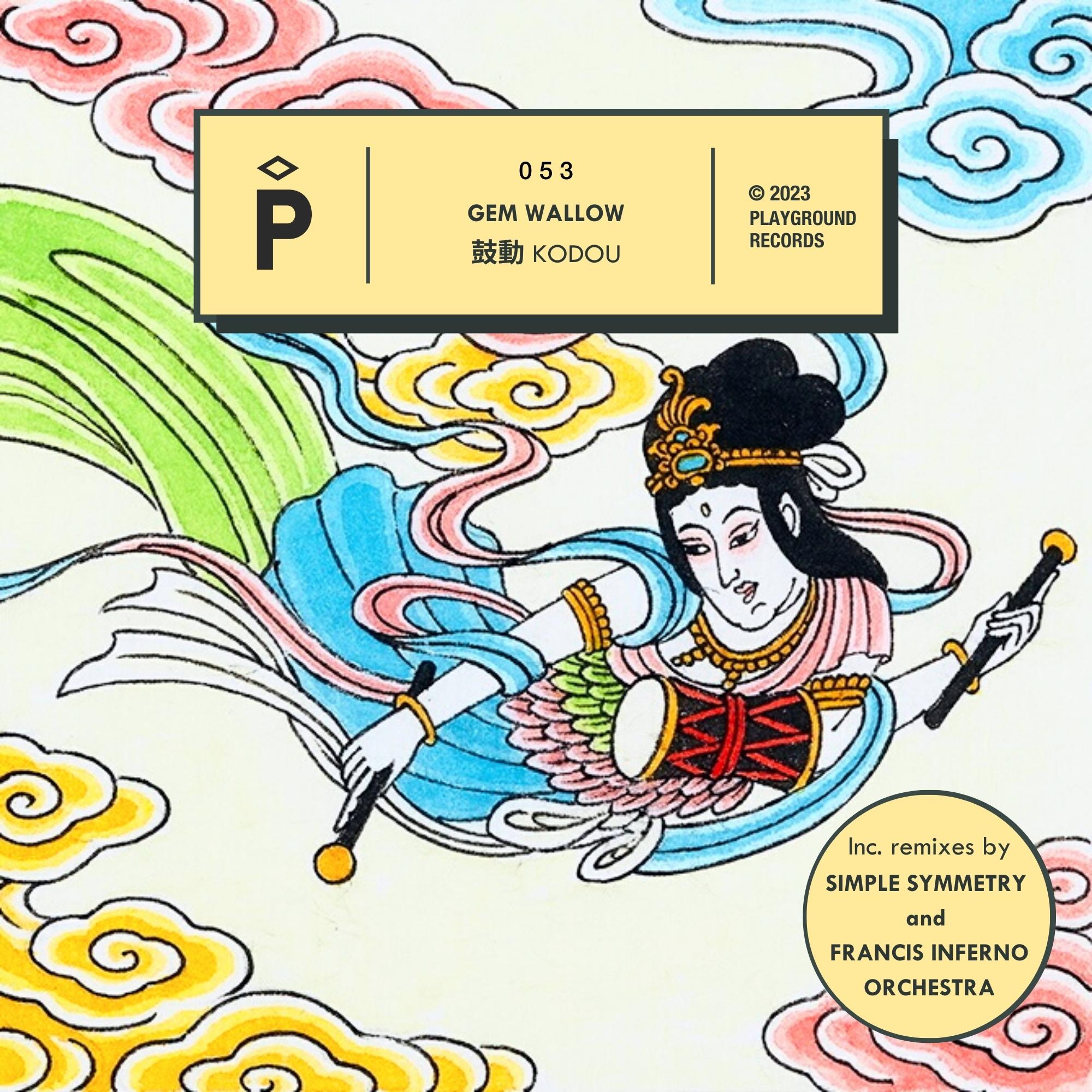Ken Ishii ‘Reference To Difference’ Sleevenotes

To celebrate its 30th anniversary, Japanese label Musicmine / Sublime Records, just reissued Ken Ishii’s cult classic ‘Reference To Difference’ on vinyl with the original track list for the first time…
Originally released back in 1994, ‘Reference To Difference’ has now been remastered and accompanied by new liner notes from Martyn Pepperell published here, Ishii’s masterpiece showcased a fusion of ambient atmospheres, space age techno, IDM, and minimalism. This reissue not only revives a pivotal moment in the 1990s Japanese techno scene but also reaffirms Ishii’s status as a pioneer who helped bring Japan’s sound to the global stage.
“Without a doubt, I think the arrival of Ken Ishii was a major turning point for the Japanese music industry in the 1990s,”

This is a piece of Japanese musical history. Thirty years after it was originally released on CD in 1994, Musicmine and Sublime Records are pleased to present the first-ever vinyl reissue of the original six-song version of Ken Ishii’s Reference To Difference. A futuristic confluence of ambient, techno, IDM and minimalist composition, the album teleports the listener through space and time to a golden moment in the mid-1990s when a dedicated generation rose out of Tokyo’s storied underground nightclubs to create a movement that took the innovation, energy, and creativity of Japan’s unique techno culture to the world.
Born in Sapporo in 1970, Ishii was introduced to the concept of electronic music at a young age through early arcade games and Japanese and German techno pop, electro, and Moog Synthesizer pioneers like Yellow Magic Orchestra, Kraftwerk, and Isao Tomita. During his teens, Ishii listened to new wave, synth-pop, EBM, and industrial music before making a musical discovery in the late 1980s that changed his life: Detroit techno.
Although he’d never envisioned himself making music, hearing early records by The Belleville Three—Juan Atkins, Derrick May, and Kevin Saunderson—transformed him. “I thought, ‘This is the music I want to make and play!’” Ishii said. The way you produce techno didn’t sound as complicated as Yellow Magic Orchestra. The gear the Detroit guys used looked inexpensive, and the music had serious and raw energy that made people dance and get excited.”
In 1989, while studying at Hitotsubashi University in Tokyo, Ishii visited a musical instrument store. On a recommendation from a clerk, he purchased a synthesizer advertised as an all-in-one music workstation, the Korg M1. “I thought, ‘I can make music with this. How easy!’” he remembered. Around the same time, Ishii started teaching himself how to DJ and organized a small dance party with some friends on campus. “In the late 1980s, making techno and DJing weren’t common hobbies for Japanese people,” he said. “There was nobody to teach me and no books, magazines or websites to refer to. I learned everything by myself.”
From there, Ishii built a collection of synthesizers, drum machines, and samplers while honing his production and DJing skills. As the 1990s dawned, he discovered Black Dog Productions and Warp Records’ Artificial Intelligence compilation album series. Blown away by the emerging British and American IDM, braindance, and ambient techno movements, he quickly folded their influence into his still-developing but cultivated aesthetic. From the beginning, Ishii’s artistic goals were modest and clearly formed. “I always wanted to give the listeners a space for artistic and creative imagination, not my thoughts,” he said.
At the time, Tokyo’s techno scene was still incubating through small parties at nightclubs like Cave in Shibuya. With no local infrastructure in place, Ishii set his sights offshore and mailed a cassette of demos to what was then his favorite techno label in the world: Belgium’s R & S Records. As he told Fabric London in 2012, “They wrote me back straightaway showing their interest in my music. I sent them more music, and they sent me a contract for a double 12″ by Fedex. That’s how everything started.”
In 1993, Ishii made his debut as a recording artist through two 12”s on R & S Records and the R & S sub-label Apollo, Pneuma, and Deep Sleep. Two further 12”s under his UTU and Rising Sun aliases with Richie Hawtin’s Plus 8 Records and ESP Records from the Netherlands followed, as did his debut album through R & S Records, Garden On The Palm. That year, he travelled to Europe for the first time, where he performed for an audience of 30,000 at the Hellraiser Dance Music Festival in Amsterdam. After just under half a decade of work, Ken Ishii had arrived.
At home in Japan, Ishii’s R & S Records releases were licensed by Sony Music, who devoted unprecedented resources to promoting his recordings domestically. The fact that they would choose to market a Japanese citizen as if he was an American or European techno artist spoke volumes about his music’s presence in the country then. That said, he was shrouded in a mysterious aura during those years. “I was incredibly shocked by his music, but there was very little formation about where he lived, what he did, and who he was,” explained Manabu Yamazaki, aka DJ Yama. “He was considered a very mysterious figure.”
While Ishii was honing his skills in his bedroom studio, Yamazaki was finding his way into Tokyo’s nightlife. A voracious record collector, Yamazaki spent years exploring punk, hip-hop, jazz, reggae, ambient, and house music before discovering techno. As he put it, “It felt like an extension of Chicago house, New York house and Acid House to me. I naturally embraced it, and along with the times, I sympathized with it very much.”
On reflection, Yamazaki remembered buying Ishii’s early 12” records after reading an interview with him. “Each track had its own unique allure,” he said. “At the time, they were very popular and a topic of conversation with core music fans. I played these tracks many times at events I spun at. I was particularly impressed with ‘Pneuma’. I liked the title, and the artwork incorporated katakana and designs reminiscent of the Japanese flag, giving a somewhat sophisticated impression.”
In the early 1990s, Yamazaki organized a weeknight ambient party at Space Lab Yellow, a popular Tokyo nightclub near the Roppongi district. “My connection to and interest in Detroit and intelligent techno was inevitable,” he reflected. When he wasn’t playing at Space Lab Yellow, Yamazaki would sometimes DJ ambient music in the second room at another legendary nightclub of the era called Gold. Thinking back, Ishii remembered a DJ friend taking him to Gold and introducing him to Yamazaki. “Yama said, ‘Oh, are you Ken Ishii?!’ and asked me to autograph a record of mine he happened to have in his record box,” Ishii said.
Ishii didn’t know it then, but Yamazaki was about to take part in launching a crucial new Tokyo nightclub, Maniac Love. When it opened in December 1993, Maniac Love marked the beginning of a new era in Yamazaki’s musical career. After Maniac Love opened its doors, Yamazaki began running two weekly events there on Saturday and Monday nights: Sublime (techno) and White Room (ambient). Both of them became crucial meeting points for like-minded music lovers.
Through Maniac Love, Yamazaki began to spend more time with Ishii and his contemporaries, like the late great Toyama-born producer, DJ, and graphic designer Susumu Yokota. Much like Ishii, Yokota began his musical career by reaching out to Europe. Not long before Ishii released Garden On The Palm through R & S, Yokota released his debut album, The Frankfurt-Tokyo Connection, through Harthouse, a Frankfurt-based label co-founded by the German producer and DJ Sven Väth.
In the wake of both albums’ overseas success, Ishii and Yokota set the benchmark for techno in Japan, inspiring the next wave of Japanese producers and DJs. By 1993, as they both became in-demand producers and DJs, it felt like their dreams were coming true. Through talking with Ishii and Yokota, Yamazaki became emboldened to transform Sublime into a record label. “It felt more like an extension of the party than a business,” he said.
Soon after, Yamazaki partnered with Hideoki Amano, who was on the verge of founding Musicmine, a respected and longstanding independent Japanese music company. As Yamazaki tells it, Amano helped him turn his dream into a reality: Sublime Records. “It took less than a year to get the label up and running,” Yamazaki continued. This was when my deep love and passion for music were raised to an all-time high.”
For Musicmine and Sublime Records’ inaugural release, Yamazaki and Amano approached Ishii about releasing music with them. “At the time, Ken Ishii’s music had some kind of magical power that led us into an unknown world,” Yamazaki said. “Yama[zaki] and his partners seemed to be the only people in Japan who knew exactly what was going on in the international techno scene,” Ishii explained. “They had a clear vision for what they could build in the country.”
After some discussion, he agreed to record a single and an album for them, Fading Sky and Reference To Difference, both of which came to fruition in 1994. “The first 7” vinyl pressing of Fading Sky was proof that our passion and creativity had taken shape,” Yamazaki said. “I still remember how unforgettable it felt when we heard the loud sounds of it coming out of the speakers in the mastering studio.”
“When we met Ken Ishii, he had the mysterious aura of a true bedroom techno genius,” Amano said. He was more like a tech engineer—a shy young man—than a musician. It was as if he knew how to create experimental music in ways that were inconceivable to other artists.” “He had an aura of youthfulness, full of unlimited potential, and his positive attitude was very impressive,” Yamazaki added.
Thinking back to 1993, Yamazaki remembered Ishii producing Reference To Difference alone in a tiny, one-room apartment. “He had a very personal and introspective production style,” Yamazaki said. “It really was a minimum,” Ishii added. “I had synths like the Korg M1 and the Roland JD-800, a Roland S-330 sampler, a Korg DDD-1 rhythm machine and crappy monitor speakers. There was no chair in my bedroom, so I was always standing to make music.” From Yamazaki’s perspective, the album was “bedroom techno”, inspiring sympathy from many listeners.
Opening with the melodic minimalism of ‘Into The Inside’ and the space-aged techno groove shown off throughout ‘Fading Sky’, Reference To Difference unfolded as an effortless series of exercises in glossy synthesizer textures, robust man/machine rhythm interfacing and understated melodies that linger in the air long after the music has finished playing. As he told the Fifteen Questions website in 2018, “I think I’m more a ‘sound’ guy. Individual sounds are more important for me than the composition itself. To me, ‘composition’ is more like things you learn and realize, while ‘sound’ is more like what you feel. I take my music as layers of sounds, not really compositions.”
After Ishii finished composing Reference To Difference, Yamazaki and Amano took him to Room 301 at Tribarythmo Studio, where the album was mixed before being mastered at Heart Beat Studio. “I guess the Sublime Records guys wanted me to experience a professional workflow in a studio,” Ishii said.
On reflection, Amano remembered feeling slightly surprised the first time he listened to Reference To Difference. “Compared to the random acoustic experimental music he’d released under his UTU alias on Plus 8 Records, or the music ambitions displayed on his R & S releases, the tracks included on Reference To Difference were of a better quality, like sketches for a more carefully crafted, soft ambient music,” he said.
To support Ishii’s remarkable music, Sublime Records worked with a graphic designer named Katsuhiko Kimura, who had been involved with flyer design, artwork and other design elements for techno events Yamazaki had organized in the past. “The concept of the design was intended to allow the listener to find various meanings through their own interpretations,” Yamazaki explained. “The 3D orb used in the label logo seems to be floating in the air. Depending on how you see it, it could also be an unidentified object like a UFO.”
By the time Reference To Difference was released in 1994, Tokyo’s small techno scene was beginning to expand. In the wake of Maniac Love’s impact, new nightclubs like the legendary Liquid Room were opening up and bringing a steady stream of world-famous DJs to the Japanese capital. Alongside this, specialist record stores and club music magazines like Ele-King and Loud were helping local DJs, industry, and music lovers tap into up-to-date overseas trends.
Beyond Sublime Records, Yamazaki also recalled the emergence of local record labels such as Transonic, Frogman Records, SYZYGY RECORDS, Torema Records, and regular nightclub events. “The interaction between artists, clubs, labels, record shops, fashion, and other creative outlets fostered a cutting-edge, underground culture,” he said. “I remember it being a time when it was so exciting to be here.”
Yamazaki remembered Reference To Difference being well received by DJs, listeners, record store buyers and music magazine writers. “People were excited by this new wave of music coming out of Japan and had high praise for its unique sound,” he said. “Looking back, I can tell that it was meaningful that the album was one of the first techno albums by a Japanese artist that was released on a Japanese label,” Ishii reflected. “Maybe I did something that bridged between old school Japanese electronic music and ‘new school’ techno in line with the Detroit sound with this album.”
After the successful release of Reference To Difference, Sublime Records and Musicmine followed up with a series of 12” vinyl singles and CDs from Susumu Yokota, Yoshihiro Sawasaki, Dan Curtin, and R.E.A.L.M. Emblazoned with slogans like “New Electronic Attitude” and “Pure Techno Experience”, Sublime Records’ releases reflected a fresh perspective and attitude towards techno music that very much felt like part of the spirit of the times. “Some of the label’s first international releases, including Ken Ishii’s 12” singles, were reviewed in music, culture and fashion magazines in the UK and Europe,” Yamazaki remembered. “Within less than a year of the label’s establishment, our Japanese techno label was getting worldwide recognition.”
More than just an album release, Reference To Difference opened the doors to a wide range of new possibilities for Sublime Records, Musicmine and the Japanese techno scene as a whole. “Musicmine’s thirty-year history began with this album,” said Amano. “The sales success garnered by the release of this maiden album undoubtedly encouraged subsequent releases by other artists from our label.”
In 1995, Ishii re-released Reference To Difference through Sublime Records under his Flare alias with three new tracks. That year, he began DJing throughout Europe, America, and Asia and released his critically acclaimed Jelly Tones album through R & S Records and Sony Music Japan in October.
A year later, Ishii’s music video for the single ‘EXTRA’, directed by Akira animator Koji Morimoto, won MTV Europe’s Best Dance Music Video award. “The ‘EXTRA’ music video, a fusion of anime and techno, is a monster landmark piece,” enthused Amano. “It became a reminder of Japan and acted as a catalyst in making Japan a sanctuary of techno music. It is a visual embodiment of Reference To Difference.”
Between ‘Extra’ and Jelly Tones, Ishii had finally arrived on the world stage. In recognition, the Japanese government commissioned him to compose the official theme song for the 1998 Winter Olympics in Nagano. By the time 2000 rolled around, he had appeared on the cover of Newsweek Magazine.
Since Reference To Difference, Ishii has released over twenty albums and countless singles, becoming a sought-after soundtrack composer for video games and movies. He continues to tour the world, collaborate with live musicians, and even brew his own craft beer, KIKK IPA. “After he signed with R&S, Ghent became his second home in Belgium,” explained Amano. “Belgium is also famous for its white beer, and I think when Ken Ishii likes something, he becomes immersed by it.”
Outside of music and craft beer, another passion Ishii has cultivated along his journey is his love of professional wrestling and martial arts. “Whenever he goes abroad, he picks up specialist wrestling magazines to read and makes time to watch matches,” Yamazaki said. “I’ve also been hit with wrestling moves by him myself, so you can say that he has quite an amusing physical, multi-faceted, and mischievous side.”
Three decades later, Yamazaki looks back on Reference To Difference as not just a pivotal moment in the history of techno, ambient and electronic music from Japan but a guiding light towards where Sublime should be heading over the next thirty years. “Reference To Difference is more than just an experimental album; it is a symbol of our dreams and passions coming to fruition,” he said. “Our encounter with Ken Ishii exhibited more than just a friendship. To us, he was a trustworthy pioneer who was an indispensable presence and guided us on a journey to explore the endless possibilities of music. This release was an important milestone in that journey and a precious result of our passion and adventure.”
“Without a doubt, I think the arrival of Ken Ishii was a major turning point for the Japanese music industry in the 1990s,” Amano reflected. “Nowadays, even the Western club music scene is rediscovering Japanese techno from the 1990s, but before Ken Ishii, no Japanese DJ was in sync with the global club music scene. He was the catalyst; now, digging Japanese music is a common sight. I think he was a pioneer for all the Japanese artists and DJs who followed in his footsteps.”
Ken Ishii
‘Reference To Difference’
Gatefold vinyl, download & stream
Remastered, with original track-list available on vinyl for the first time






















Must Reads
David Holmes – Humanity As An Act Of Resistance in three chapters
As a nation, the Irish have always had a profound relationship with the people of Palestine
Rotterdam – A City which Bounces Back
The Dutch city is in a state of constant revival
Going Remote.
Home swapping as a lifestyle choice
Trending track
Vels d’Èter
Glass Isle
Shop NowDreaming
Timothy Clerkin
Shop Now